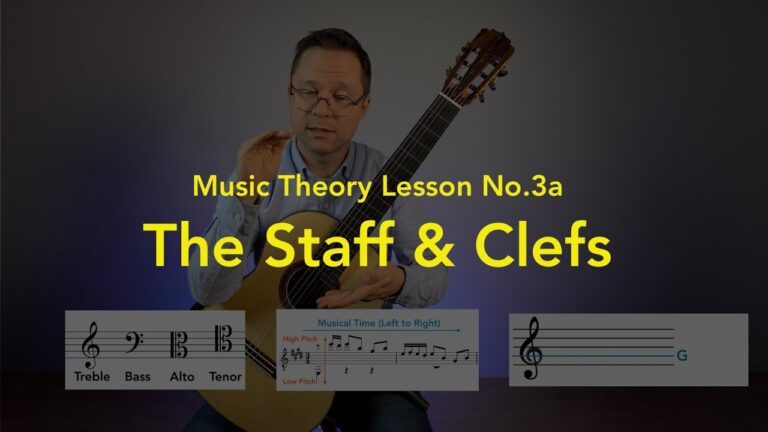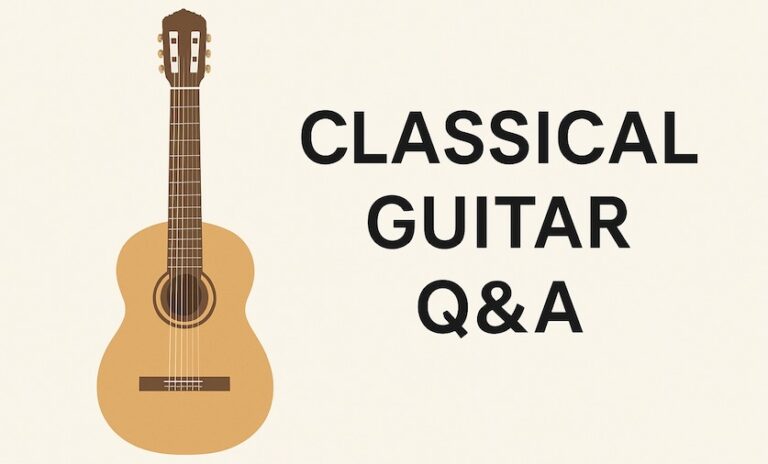This exercise is from my new book Classical Guitar Technique: Essential Exercises, Scales, and Arpeggios. The 122 page book includes: Practice Routines, Tips, 100 Open String Exercises, 120 Giuliani Arpeggios, Scales, Slur Exercises, Shifts, Finger Independence, Barre, Tremolo, Common Harmonics, and much more. YouTube Video Link (HD)
Practicing open string exercises allows you to focus solely on the right hand and really examine your right hand technique. You might think these exercises are easy but you need to ask yourself: Can I play basic exercises as well as a professional guitarist? Is my tone good? Could my legato sound be better? Am I truly relaxed and accurate when I play?
Always alternate the fingers in all the combos and practice with both rest and free stroke:
Two finger combinations: i-m / m-i / m-a / a-m / i-a / a-i
Three Finger Combinations: a-m-i / a-i-m / m-i-a / m-a-i / i-a-m / i-m-a
Below is a closer look at exercise 11:




Hello Bradford, I have been working through open string exercises and am at a point where some of exercises are natural. You recommend for extra practice that you can accent one of the notes in exercise. I have tried plucking the string harder (free stroke) and also tried using rest stroke on the accented note. It’s much harder switching back and forth from rest to free stroke. Which is the way you would recommend? Thank you.
The rest stroke method is a great way to practice back to back with free stroke since the rest stroke will likely influence the muscle memory of a deep stroke. But the main thing if you are using only free stroke is to practice a deeper follow through with the finger, as an experiment you can even touch your palm at the end of the finger stroke.
Great book and video. I did not see if you have a recommendation as to how many exercises to work on at a time and when to progress to the next. For example if you can do the first two with IM easily but struggle with MA or AI. Should you wait till these improve or forge ahead? Also interesting point about moving hand diagonally across strings. I am curious about how to do this with arpeggios or playing in higher positions
Thanks Bradford. I think I have to try all 3 suggestions
When I play exercises 1 to 5 with i & m fingers I always feel a great strain in the middle joint of my m fingers. When played using m & a fingers I don’t have such problem and the fingers just alternate naturally and smoothly even at fast speed. Whereas with i & m the movement feels unnatural and the middle joint a bit swell and pain. I have tried play very slowly first m-a and then i-m to compare the attack on the string of the m finger it seems the same. But when play i-m continuously I feel the strain. Very frustrating and need help.
Hi Terry, first thing is to relax and not worry about it. Make sure you are enjoying your practice sessions. Play the exercises slowly only for a little while and never to the point where it frustrates you. Music and technique is very long-term so we must practice slowly without hoping for immediate results. It’s like eating too fast, we need more time to digest the material.
Of course, posture, guitar positions, and hand positions are key to success. It involves ergonomics and relaxation which usually clears up any issues. It could be completely unrelated to your fingers but instead traced to tension in other areas of your body.
Most people actually find m-a fingering to be a strain but everyone is different. Consistent practice with a variety of techniques over a long period will be important. Stretching might help but you should consult a doctor or physiotherapist about it. Depending on your age or history you might have a pre-existing injury or some mild arthritis in a finger. Most of the time though, it’s just something that needs to be worked through slowly over a long period of time. Do the work daily and then move on and enjoy the rest of your practicing.
Thanks Bradford, I will continue to do/practice as you have suggested and be patient. I am self-taught and just playing pieces by hard without any technical training. So I would attribute the problem to decades of bad techniques.
Love your tutorials and materials. You are a great teacher.
Hi Bradford. Thanks again for your in depth reply on my predicament and I wonder if you could help me further.
I have been continuing with my practices and still have problem in alternating my i and m fingers. But now I discovered that when alternating i m fingers, my m finger knuckle bone actually slips from its crest as I move it into the palm causing the finger to be displaced. I suspect that I have been unconsciously stiffened the m finger to prevent the displacement stressing on the playing thereby causing the strain and pain in the middle joint. Have you come across problem like this or is this a pre-existing injury that you have mentioned? The problem is less pronounce when i play adjacent strings but more when skipping 0ne string or more.
I sure hope it is not an injury as this will spoil my plan on playing the guitar well.
Thanks in advance.
Well the first thing I’d recommend is to practice very slowly and carefully with as little tension as possible. Go back to the most simple exercises and reaffirm your foundation level technique. Don’t worry if the guitar sounds super soft when playing lightly, you just want to learn the proper movements without the tension. Once the movements feel and look good and correct you can start applying a bit of pressure and see if you can maintain good technique.
A qualified teacher might be able to address something specific about your technique to work on.
Finally, I recommend you go to a doctor or physiotherapist that deals with hands. It can be so helpful and they might suggest a few stretches and exercises to help out. It might seem like a lot of money to spend but in conjunction with a guitar teacher it can do wonders, especially if there is an actual physical issue.